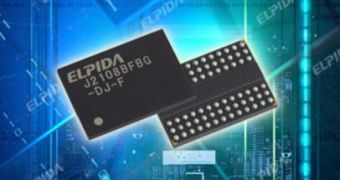After many months of decline, memory makers and vendors can finally start to increase their chip and module prices, even though consumer demand continues to be rather weak.
It wasn't so long ago that the memory market reached such a low level in terms of demand that it was believed prices couldn't go much lower.
Despite production capacity cuts and attempts at reviving user interest through newer, better and more efficient memory, oversupply persisted throughout 2010 and 2011.
Things have actually got bad enough that Elpida, a major maker of memory, is seriously considering a total retreat from this segment, despite Kingston's assistance.
The situation is not much better now, with inventories continuing to be much higher than consumer desire to buy.
On the bright side, as far as companies go at least, it isn't quite as bad as before, as DRAM chip prices went up in the first half of this month (February, 2012), according to DRAMeXchange.
Granted, the price of 2GB DDR3 modules stayed more or less the same, but 4GB DDR3 modules jumped from $17.25 to $18. That translates into a rise from 13.26 Euro to 13.84 Euro.
Since a new wave of PC acquisitions is expected to happen soon, PC OEMs are looking to secure large quantities of memory chips as Intel's Ivy Bridge CPU series and NVIDIA's Kepler GPUs draw near.
The rest of the year may proceed along a similar note, which means that the time of declining memory chip prices may finally be at an end.
On the other hand, even if market sentiment is turning optimistic, there is still a chance that this is a momentary rebound and that prices will just slump again.
Even in the best case scenario, quotes will only ascend for a small bit before finding a more or less stable level.

 14 DAY TRIAL //
14 DAY TRIAL //